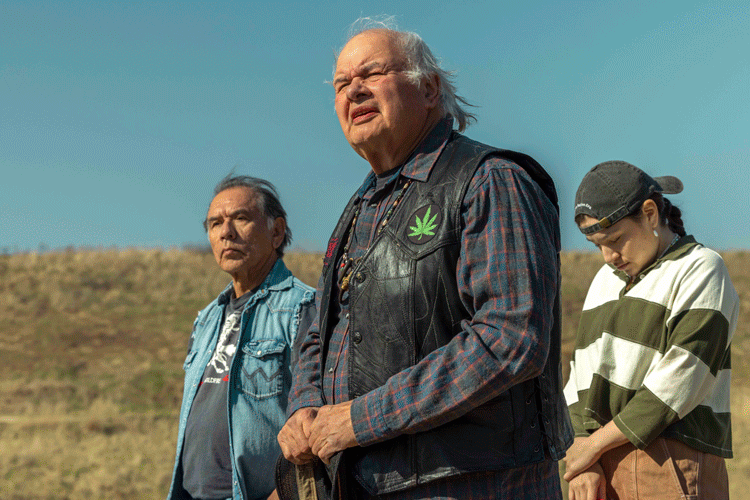How about some mayo on that?
- Share via
Now in its third season, “10 Items or Less” (TBS, 11 p.m. Tuesday) is a modest sitcom, modestly drawn, and with modest ambitions.
Its characters don’t much grow from episode to episode. Its plotlines are sprightly riffs on contrived scenarios. Dialogue is improvised, which means it can be hit or miss. Centered on a grocery store, Greens & Grains, competing with a large competitor, Super Value Mart, it’s in the spirit of other madcap small-environment, small-cast workplace comedies like “Reno 911!” and “Halfway Home” -- whimsical, but limited.
But it’s possible, though, that in the current climate, a sitcom of this sort can guarantee its longevity only with a novel revenue strategy. And John Lehr, who plays the protagonist, Greens & Grains manager Leslie Pool, and is also one of the show’s creators, has no shame about the subject.
“We wanted to do a workplace comedy, because it’s fun to write characters in that kind of environment,” he explained last year to iTVX.net, a website devoted to news and information about product integration, “and we were looking for an environment that was surrounded by products so that it was conducive to product placement. We took that into consideration from the get-go.” (Narrative-driven advertising doesn’t scare Lehr: He played one of the cavemen in the original Geico television commercials, though not the subsequent television show.)
The placements are sold as part of ad bundles by the network, and then the products are presented to the show runners, who create the integrations. In an average placement, a 30-second spot for the main advertiser runs at the beginning of the first major commercial break, approximately seven minutes into the show’s half-hour. Then, about midway through the show, or a little later, comes the integration scene, which lasts approximately a minute.
In the season premiere this month, there were two featured sponsors: Vaseline MEN and Hellman’s Light mayonnaise (which required at least a little suspension of disbelief -- both products were in the same aisle). In the second episode, Reese’s was the featured product. Next week, it’s Glade Fabric & Air. (Last week’s episode, a “Star Trek” riff that featured a cameo by Jolene Blalock of “Star Trek: The Next Generation” had no sponsor.)
In the premiere, Pool was in the middle of a marathon session of turkey bowling -- yes, exactly what it sounds like -- when a co-worker gave him a turkey sandwich for sustenance.
“It’s a little dry,” he mused. “It’d be nice if we could put something on it like a condiment or something. Something that’s sorta light, you know, with Omega-3. Deliciiiooouuus. Goes on turkey, but not just turkey, you can put it on lots of things. Not honey, honey’s too sweet. . . .”
His co-worker then points out the wall of Hellman’s Light that had been behind them all the while. Joy ensues: “Aisle 3 rocks!”
Strangely, it’s not uncomfortably invasive. Not because it is slickly done, and not because it’s done with a wink, as “30 Rock” would do -- neither of those is the case. In so much as the strategy succeeds, it does so because of the show’s improvisational quality, as if Lehr -- he generally does the shilling -- were working out on the spot how to pull it off without appearing tacky or craven.
“Leslie is funny and not satirizing product,” Lehr continued in the aforementioned interview. “We make our characters funny, which we feel is the better way to go.”
Product placement routinely fails because it feels like a recalibration of power away from the viewer, who is forced to engage an advertising message instead of the creative vehicle into which it’s woven. But in this case, the unfailingly genial Lehr, and his bumbling character Leslie, are almost impossible to dislike or to mistrust. He’s clearly pitching a product but is as uncertain on how to do it as the viewer is on how to receive it.
By the time, you’ve got it all sorted out, you’ve been sold.
--


